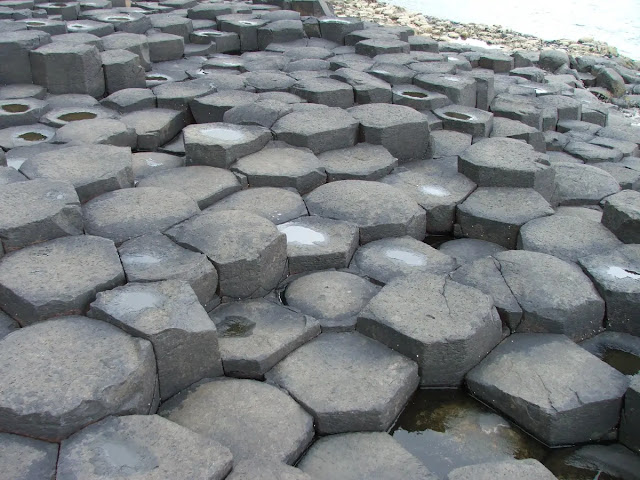Pangaea: Facts About Pangea the Most Recent Supercontinent
Pangaea was a supercontinent that existed during the late Paleozoic and early Mesozoic eras.
Formation
Pangea was formed around 335 million years ago from the earlier continental units like Gondwana, Euramerica (Laurussia), and Siberia during the Carboniferous period.
C-Shaped Supercontinent: Unlike the continents scattered around the
globe today, Pangaea wasn't symmetrical. It had a C-shape, with the bulk
of its landmass concentrated in the southern hemisphere.
Pangaea formed through a gradual process spanning a few hundred million years. Beginning about 480 million years ago, a continent called Laurentia, which includes parts of North America, merged with several other micro-continents to form Euramerica. Euramerica eventually collided with Gondwana, another supercontinent that included Africa, Australia, South America and the Indian subcontinent.
Pangaea Name: The name "Pangaea/Pangea" is derived from Ancient Greek pan (πᾶν, "all, entire, whole") and Gaia (Γαῖα, "Mother Earth, land")
Surrounding Ocean: Pangaea wasn't alone in the world. It was surrounded by a vast superocean called Panthalassa, meaning "all sea." There were also other smaller oceans like the Paleo-Tethys Ocean on the edges.
First Identified by Alfred Wegener: German meteorologist and geophysicist Alfred Wegener proposed the idea of Pangaea and continental drift in 1912, observing that continents like South America and Africa fit together and shared similar fossils, rocks, and geologic features.
Evidence for the existence of Pangaea comes from a variety of sources, including the distribution of fossils, rocks, and mountain ranges. For example, scientists have found fossils of the same plant and animal species on continents that are now widely separated, such as North America and South America. This suggests that these continents were once connected together.
 |
| The distribution of fossils across the continents is one line of evidence pointing to the existence of Pangaea. |
Warm and Dry Climate: Pangaea was much warmer and drier than the Earth is today. The climate of Pangaea was also much more uniform, with fewer extremes of temperature and precipitation. This was due to the fact that there was less land-sea contrast, as all of the continents were connected together.
Plate Tectonics: Pangaea’s breakup was caused by the movement of Earth’s tectonic plates, leading to the formation of the Atlantic Ocean and eventually resulting in the continents we know today. This process is ongoing, with tectonic plates continuing to shift slowly.
When Did Pangea Break Up: Pangaea began its breakup around 200 million years ago during the early Jurassic period. This monumental geological event saw the supercontinent first split into two major landmasses: Laurasia to the north and Gondwana to the south. The initial rifting that created the central Atlantic Ocean was marked by the Central Atlantic Magmatic Province (CAMP) around 201-199 million years ago, characterized by extensive volcanic activity. Over the next tens of millions of years, these continents continued to diverge, shaping the world's current geography, with the process of continental drift still ongoing today.
The breakup of Pangaea had a major impact on the Earth's climate and plant and animal life. For example, the creation of new oceans changed the patterns of global circulation, which led to changes in temperature and precipitation. This caused some plants and animals to go extinct, and it also led to the evolution of new species.

Pangea With Our Current International Borders
There is evidence to suggest that the deterioration of northern Pangaea contributed to the Permian Extinction, one of Earth’s five major mass extinction events, which resulted in the loss of over 90% of marine and 70% of terrestrial species.
Pangaea is not the only supercontinent that has existed in Earth's history. There have been several other supercontinents over the past 4 billion years, including Rodinia, Nuna, and Columbia. Pangaea was the most recent supercontinent to have existed and the first to be reconstructed by geologists.
The Future Supercontinent?: Some scientists theorize that the continents may eventually come together again in a future supercontinent, nicknamed Pangea Ultima (meaning "ultimate Pangaea"). However, this is predicted to happen hundreds of millions of years from now. This supercontinent is likely to be called Amasia.
These are just some of the fascinating facts about Pangaea. Studying this ancient supercontinent helps us understand the dynamic nature of Earth's continents and the ongoing story of plate tectonics that continues to shape our planet today.
See also:What Pangea Would Look Like With Our Current International Border
The Largest Insect Ever Existed Was a Giant "Dragonfly"
10 Interesting Facts About the Geological Time Scale




%20(1).webp)




